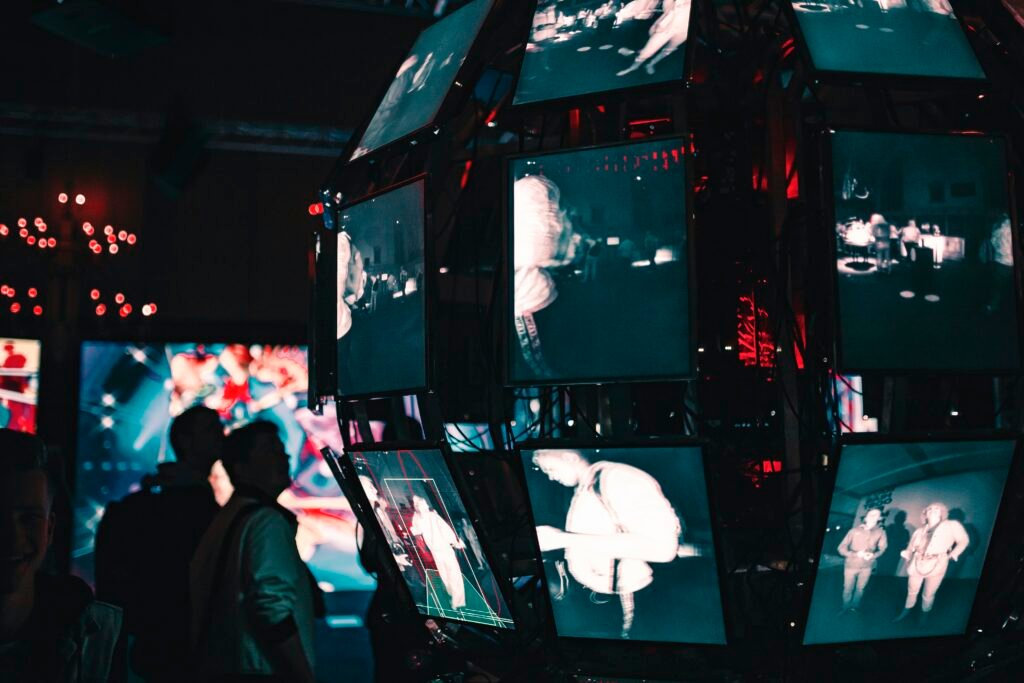Did you know that the packaging industry is undergoing a revolution? With new advancements in technology and changing consumer preferences, innovative solutions are redefining the way products are packaged and presented to customers. From eco-friendly alternatives to smart packaging designs, the packaging industry is embracing creativity and sustainability. In this article, we will explore the latest packaging innovations and trends that are shaping the future of the industry. Get ready to discover the exciting world of packaging solutions that are both innovative and environmentally conscious.
Sustainable Packaging

This image is property of images.unsplash.com.
Biodegradable materials
In today’s world where environmental consciousness is on the rise, biodegradable materials have become a game-changer in the packaging industry. These materials, such as bioplastics made from renewable resources like corn starch, are designed to break down naturally when exposed to the elements, minimizing their impact on the environment. By opting for biodegradable packaging, you can contribute to reducing plastic waste and promoting a sustainable future.
Compostable packaging
Compostable packaging takes the concept of sustainability one step further. Unlike biodegradable materials that simply break down into smaller pieces, compostable packaging is designed to completely decompose into nutrient-rich compost, which can then be used in gardening or farming. By using compostable materials, you not only reduce waste but also contribute to the creation of a circular economy, where resources are reused and nothing goes to waste.
Reusable packaging
One of the most effective ways to minimize waste is by utilizing reusable packaging solutions. Instead of being discarded after a single use, reusable packaging can be used multiple times, reducing the need for constant production and disposal of packaging materials. Reusable packaging could range from glass jars for food products to refillable containers for personal care items. By integrating reusable packaging into your business model, you can demonstrate a commitment to sustainability while also providing a convenient and eco-friendly option for your customers.
Smart Packaging
Active packaging
Active packaging refers to the integration of technologies that actively interact with the packaged product to enhance its quality, safety, and shelf life. For example, food packages with oxygen absorbers can help extend the freshness of perishable goods, antioxidants in packaging can prevent the oxidation of products, and moisture-control technologies can retain the ideal moisture level to prevent spoilage. Active packaging ensures that products maintain their optimal condition throughout the supply chain, reducing waste and enhancing customer satisfaction.
Intelligent sensors
Intelligent sensors are revolutionizing the way we monitor and track products within the packaging industry. These small devices can be embedded in packaging to provide real-time data on various factors such as temperature, humidity, and pressure. By having access to this information, manufacturers and retailers can ensure that products are handled and stored in the right conditions, preventing damage and maintaining product integrity. Intelligent sensors also enable early detection of issues, allowing for timely interventions and reducing the risk of product spoilage.
NFC technology
Near Field Communication (NFC) technology is transforming the way consumers interact with packaging. By simply tapping their smartphones on NFC-enabled packaging, consumers can access a wealth of product information, promotions, and even make purchases. NFC technology allows for seamless and interactive experiences, providing a direct channel for brands to engage and educate consumers. From providing detailed product specifications to offering loyalty rewards, NFC technology can enhance the overall consumer experience and create a stronger connection between brands and their customers.
Customization and Personalization
On-demand printing
Gone are the days when packaging had to be produced in mass quantities. On-demand printing allows for the creation of customized packaging in smaller batches, tailored to specific products or events. This flexibility not only reduces waste but also opens up opportunities for personalized branding and limited edition designs. Whether it’s adding a customer’s name or creating unique packaging for a special occasion, on-demand printing enables brands to offer a more personalized and memorable experience to their customers.
Personalized branding
In a crowded marketplace, personalized branding can help your products stand out from the competition. By incorporating elements such as the customer’s name, preferred colors, or even custom messages, packaging can create a sense of exclusivity and connection with the consumer. Personalized branding adds an extra layer of value to the product, making it feel tailor-made for the individual. This level of customization not only enhances the overall consumer experience but also cultivates loyalty and brand advocacy.
Variable data printing
Variable data printing takes personalization to the next level by allowing for the individualization of each package within a production run. This technology enables brands to print unique codes, personalized messages, or even variable images on each package, providing a highly personalized product experience. Whether it’s to create a sense of urgency with limited-time offers or to enable interactive experiences through QR codes, variable data printing empowers brands to engage with their customers on a one-to-one basis, fostering stronger connections and driving repeat purchases.
Minimalist Packaging
Reduced material usage
Minimalist packaging focuses on the efficient use of materials, eliminating excess and reducing waste. By streamlining the packaging design, less material is needed while still ensuring adequate protection and functionality. This not only reduces costs for the brand but also minimizes the environmental impact of packaging production and disposal. By embracing minimalist packaging, you can create a sleek and clean aesthetic that attracts environmentally-conscious consumers and aligns with your sustainability goals.
Streamlined design
Streamlined design in packaging emphasizes simplicity and functionality. By removing unnecessary elements or layers, packaging becomes more efficient and easier to use. The focus is on creating a seamless and intuitive experience for the consumer, from easy-to-open packages to user-friendly features. Streamlined design not only enhances the overall product experience but also reduces frustration and waste associated with overly complex packaging.
Minimalist labeling
Minimalist labeling is a key component of minimalist packaging, where the focus is on communicating essential information in a concise and visually appealing manner. By simplifying the design, font, and overall structure of the label, brands can create a clean and uncluttered look that captures attention without overwhelming the consumer. Minimalist labeling reinforces the brand’s commitment to simplicity and sustainability, allowing the quality of the product to shine through.
Augmented Reality in Packaging

This image is property of images.unsplash.com.
Virtual product experiences
Augmented Reality (AR) technology offers exciting opportunities to enhance the packaging experience by bringing products to life in a virtual environment. By scanning a product’s packaging with a smartphone or using AR-enabled glasses, consumers can explore immersive product demonstrations, virtual tours, or even try-on experiences. Virtual product experiences allow brands to showcase the features and benefits of their products in a captivating and interactive way, bridging the gap between the physical and digital worlds.
Interactive packaging design
AR technology enables packaging to become a canvas for interactive design and storytelling. By incorporating interactive elements into the packaging design, brands can create engaging experiences that captivate consumers and leave a lasting impression. Whether it’s revealing hidden messages, unlocking additional content, or triggering mini-games, interactive packaging design adds an extra layer of excitement and intrigue, turning the packaging itself into a form of entertainment.
AR-assisted instructions
Augmented Reality can also provide valuable assistance in using and assembling products through AR-assisted instructions. With the help of AR overlays, users can visualize step-by-step instructions directly on the packaging, eliminating the need for lengthy manuals. This not only simplifies the process for consumers but also reduces the likelihood of errors or frustration. AR-assisted instructions make product use more intuitive and accessible, enhancing the overall consumer experience.
Intelligent Tracking and Traceability
RFID tags
Radio Frequency Identification (RFID) tags enable the tracking and identification of products throughout the supply chain. By attaching RFID tags to individual products or packaging, manufacturers and retailers can monitor and manage inventory in real-time. RFID technology provides accurate and efficient tracking, reducing errors and improving supply chain visibility. From ensuring timely restocking to preventing loss or theft, RFID tags have become an essential tool for intelligent tracking and traceability.
Blockchain technology
Blockchain technology offers a decentralized and transparent system for tracking and tracing products. By recording every transaction and movement within the supply chain on a secure and immutable ledger, blockchain technology ensures the integrity and authenticity of products. It enables stakeholders to verify the origin, quality, and journey of a product, reducing the risk of counterfeiting and ensuring consumer trust. Blockchain technology revolutionizes supply chain transparency, fostering a more ethical and accountable industry.
Supply chain transparency
Intelligent tracking and traceability promote supply chain transparency, allowing consumers to make informed purchasing decisions. By providing access to data on a product’s journey, origin, and environmental impact, brands can build trust and loyalty with their customers. Supply chain transparency not only creates a sense of accountability for brands but also allows consumers to support ethical and sustainable practices. By embracing intelligent tracking and traceability, you can demonstrate your commitment to transparency and responsible sourcing.
Interactive Packaging

This image is property of images.unsplash.com.
QR codes
Quick Response (QR) codes have become ubiquitous in packaging, offering a convenient way to bridge the physical and digital worlds. By scanning a QR code with a smartphone, consumers can access a wide range of content, such as product information, promotions, or even interactive experiences. QR codes provide a direct and seamless connection between brand and consumer, allowing for enhanced engagement and access to valuable resources.
Interactive games
Packaging is no longer just a vessel for the product; it can also be a source of entertainment. Interactive games integrated into packaging offer a unique and enjoyable experience for consumers. Whether it’s a puzzle, trivia, or a digital scavenger hunt, interactive games create a sense of fun and excitement, encouraging repeat purchases and brand loyalty. By incorporating games into packaging, brands can create memorable experiences that make their products stand out.
Augmented reality interactions
Augmented Reality (AR) takes interactivity to the next level by allowing consumers to interact with virtual elements through their smartphones or AR-enabled devices. By scanning the packaging, consumers can unlock hidden content, play with virtual objects, or even try on virtual makeup or clothing. Augmented reality interactions create immersive and personalized experiences, enabling brands to connect with consumers on a deeper level and create a lasting impact.
Flexible Packaging
Stand-up pouches
Stand-up pouches have gained popularity as a flexible packaging solution that offers convenience and functionality. These pouches are lightweight, space-efficient, and provide excellent product protection. Stand-up pouches can be easily resealed, ensuring the freshness and longevity of the product. With customizable designs and printing options, stand-up pouches allow brands to showcase their products in an eye-catching and practical manner.
Foil packaging
Foil packaging is widely used in various industries due to its excellent barrier properties. Foil provides an effective shield against moisture, light, and oxygen, thus preserving the quality and freshness of products. From food and beverage packaging to pharmaceuticals and cosmetic products, foil packaging ensures product integrity while offering a visually appealing and premium look. Foil packaging is also lightweight and easily recyclable, making it a sustainable choice.
Flexible films
Flexible films offer versatility and adaptability in packaging solutions. These films can be molded, shaped, or heat-sealed to create customized packaging for different products. Flexible films provide excellent barrier properties, protecting products from oxygen, moisture, and contaminants. They are also lightweight, reducing transportation costs and carbon footprint. With advancements in technology, flexible films can now incorporate various features such as easy-open seals, resealable zippers, or even customizable printing options, enhancing the overall consumer experience.
Anti-counterfeiting Measures
Tamper-evident seals
Tamper-evident seals are an effective tool in combating counterfeiting and ensuring product safety. These seals provide visible evidence of tampering, making it easy for consumers to identify whether a product has been interfered with during transportation or storage. Tamper-evident seals not only protect the brand’s reputation but also safeguard consumers from potential harm or counterfeit products. By incorporating tamper-evident seals into packaging, brands demonstrate their commitment to consumer safety and trust.
Holographic labels
Holographic labels offer a visually striking and tamper-proof solution to counterfeiting. These labels use advanced holographic technology to create unique patterns and images that cannot be easily replicated. Holographic labels provide a clear visual indication of authenticity, allowing consumers to quickly identify genuine products. The use of holographic labels not only enhances the brand’s image but also acts as a deterrent for counterfeiters, protecting both the brand’s reputation and consumer confidence.
Track-and-trace technologies
Track-and-trace technologies leverage unique identifiers and digital systems to monitor and authenticate products throughout the supply chain. By assigning each product a unique code or barcode, brands can track its journey from production to distribution, ensuring its integrity and authenticity. Track-and-trace technologies enable consumers to verify the origin and legitimacy of a product, providing peace of mind and protection against counterfeit goods. With increased transparency and accountability, track-and-trace technologies help build trust and brand loyalty.
Eco-friendly Initiatives
Recycling programs
Implementing recycling programs is a crucial step towards minimizing the environmental impact of packaging. By encouraging consumers to recycle their packaging through convenient and accessible programs, brands can divert materials from landfills and promote a circular economy. Recycling programs can include the collection and processing of packaging materials, as well as educating consumers on proper disposal practices. By actively participating in recycling programs, brands demonstrate their commitment to sustainability and responsible waste management.
Carbon-neutral manufacturing
Reducing carbon emissions is an imperative in battling climate change, and the packaging industry has a role to play in this effort. Carbon-neutral manufacturing involves measuring, reducing, and offsetting the carbon footprint associated with the production and transportation of packaging materials. This can be achieved through various measures such as energy-efficient manufacturing processes, the use of renewable energy sources, and investing in carbon offset projects. By adopting carbon-neutral manufacturing practices, brands can significantly reduce their environmental impact and contribute to a more sustainable future.
Reusable packaging incentives
To encourage the adoption of sustainable packaging solutions, brands can provide incentives for customers to use reusable packaging. This can be done through loyalty programs, discounts, or even deposit schemes, where customers receive a refund for returning packaging. Reusable packaging incentives not only promote a culture of sustainability but also enable brands to establish a positive and engaging relationship with their customers. By rewarding environmentally-friendly behaviors, brands can drive consumer loyalty and foster a more sustainable mindset.
In conclusion, the packaging industry is undergoing a paradigm shift towards innovation and sustainability. From biodegradable materials and reusable packaging to augmented reality experiences and intelligent tracking, the possibilities for redefining packaging are endless. By embracing these emerging trends and technologies, brands can create more environmentally-friendly, interactive, and personalized packaging solutions that meet the evolving needs and values of consumers. As we move towards a more sustainable future, the packaging industry plays a vital role in driving positive change and shaping a greener world.
